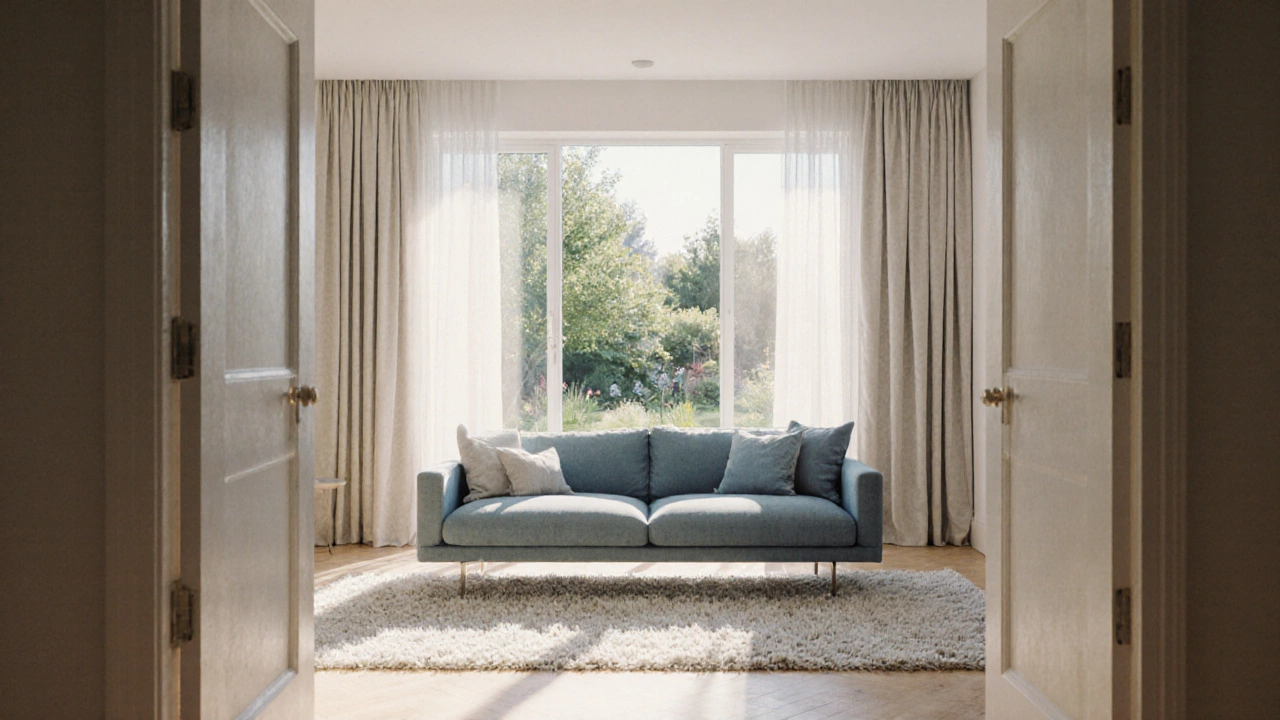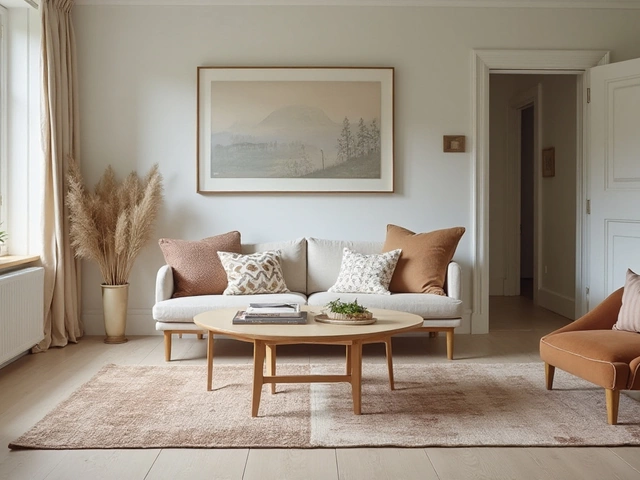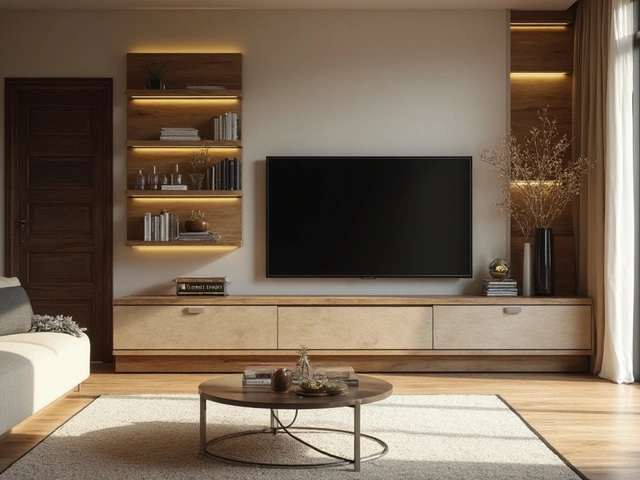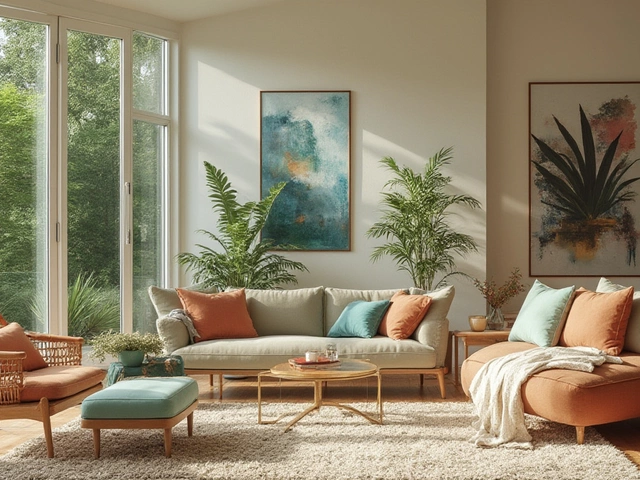Ever walked into a room and wondered whether that couch blocking the view was a good idea? couch placement can feel like a puzzle-one wrong move and you end up with glare, wasted space, or a chilly spot on the floor. This guide walks you through the real pros and cons, shows how to dodge common pitfalls, and gives you a step‑by‑step plan so you can decide if a sofa in front of a window works for your home.
Key Takeaways
- Putting a couch in front of a window boosts natural light and creates a cozy reading nook, but may cause heat loss and privacy issues.
- Use thermal curtains, blinds, or window films to control glare and preserve energy.
- Maintain traffic flow by keeping at least 24‑30 inches of clear walk‑way in front of the couch.
- Consider the room’s focal point-if the window is the main view, position the couch to face it rather than block it.
- Run through a quick checklist before finalising the layout.
Understanding the Basics of Couch Placement
Before you start moving furniture, let’s define the main players.
Couch is a low, upholstered seating piece designed for multiple occupants, usually placed in living rooms or family areas. It serves as both a functional spot for sitting and a visual anchor in a room.
Window is an opening in a wall fitted with glass that lets light, air, and sometimes views into a space. Its size, orientation, and treatment affect lighting, heat flow, and privacy.
Natural Light refers to sunlight entering a room, influencing mood, perceived space, and energy consumption.
Heat Loss is the reduction of indoor temperature through windows, especially when large glass areas lack proper insulation.
Privacy denotes the degree to which occupants can shield themselves from outside view, often managed with curtains or blinds.
Room Layout is the arrangement of furniture and circulation paths that defines how people move and interact within a space.
Window Treatment includes curtains, blinds, shades, or films used to regulate light, heat, and privacy.
Focal Point is the visual center of a room that draws the eye-often a fireplace, TV, or an outdoor view.
Pros of Placing a Couch in Front of a Window
When done right, this arrangement can actually enhance your living space.
- Maximized Natural Light: Sitting right next to a window means you’ll enjoy daylight without needing lamps during the day.
- Scenic Views: If your home offers a garden, city skyline, or water view, a front‑window couch makes that scenery part of your daily routine.
- Cozy Reading Nook: A well‑lit spot is perfect for books, tablets, or a morning coffee.
- Visual Balance: A couch can break up a large expanse of glass, preventing the room from feeling too “open” or lacking a sense of grounding.
- Energy Efficiency (with the right treatment): Using insulating curtains at night helps retain heat, while daytime open windows let sunlight warm the room naturally.
Cons and Challenges to Watch Out For
Every advantage comes with a trade‑off.
- Heat Loss: Large glass panels can drive indoor temperature down, especially in winter. Without proper window treatment, you’ll see higher heating bills.
- Glare: Direct sun can cause uncomfortable glare on TV screens or computer monitors positioned nearby.
- Privacy Concerns: Depending on your street or neighbor’s windows, a couch facing out can feel exposed.
- Furniture Damage: Sunlight fades upholstery over time. UV rays can also weaken fabric fibers.
- Traffic Flow Issues: If the couch blocks the natural pathway from one side of the room to the other, you’ll create a bottleneck.
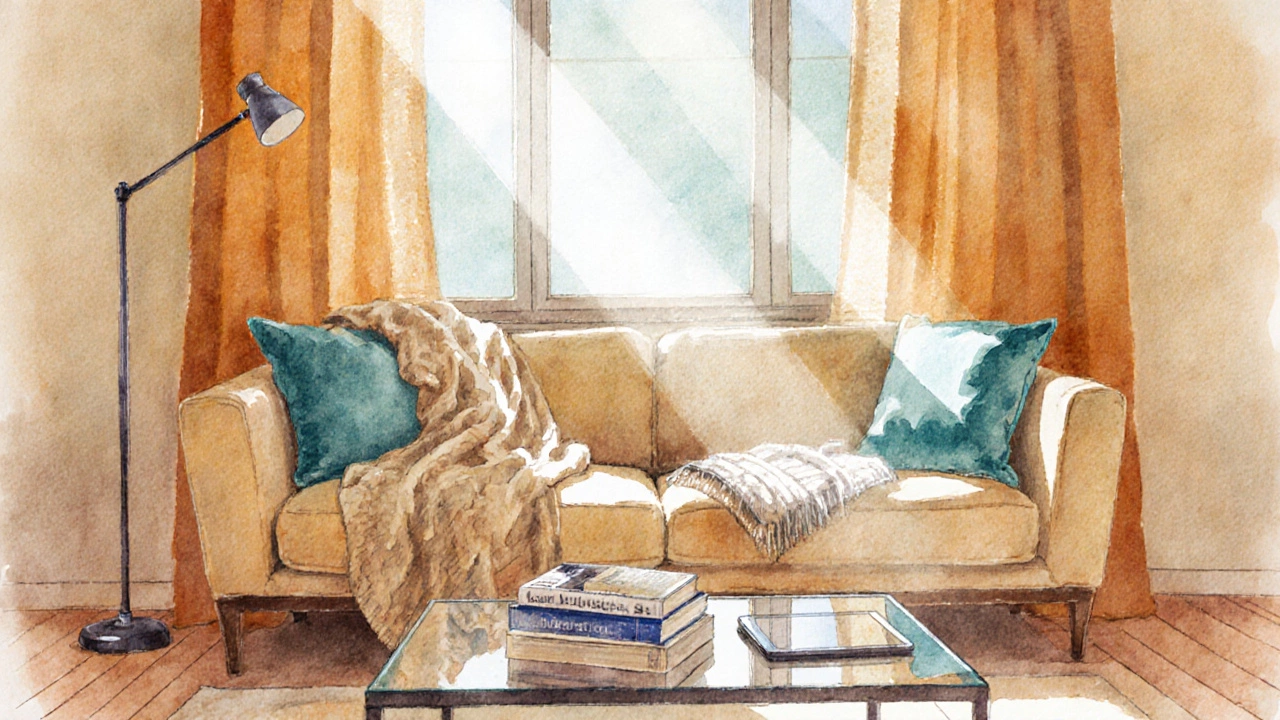
How to Mitigate Downsides
Luckily, most problems have simple fixes.
- Install Thermal Curtains or Blinds: Look for fabrics with a “R‑value” of 3 or higher. Close them at night to trap heat and open them during the day for light.
- Apply UV‑Blocking Window Film: A 0.5% UV film reduces fading without darkening the view.
- Use a Slipcover or Light‑Reflective Throw: A reversible cover can protect upholstery on sunny days and be swapped out for a darker shade in winter.
- Position a Low‑Profile Coffee Table: A table with a reflective top can bounce light up, reducing direct glare on the couch.
- Maintain a Clear Walkway: Keep at least 24‑30 inches of space between the couch edge and the door or high‑traffic area.
Practical Layout Tips
Now let’s turn advice into action.
- Measure first: Determine the exact width of the window and the couch. Leave a minimum of 12‑18 inches on each side for balance.
- Angle the couch slightly: If you tilt the sofa 5‑10 degrees inward, you preserve the view while reducing the amount of glass blocked.
- Match the couch height to window sill: A low‑profile sofa (seat height 18‑20 inches) aligns better with a standard sill, keeping the line of sight unobstructed.
- Layer with a rug: An area rug placed under the couch adds warmth, reduces heat loss through floor, and grounds the seating area.
- Create a secondary focal point: Add a floor lamp or a small side table opposite the window to give the eye another destination.
Alternative Arrangements to Consider
If the cons outweigh the pros for your space, try these variations.
- Side‑by‑Side Layout: Place the couch parallel to the window, leaving the window fully visible. This works well in narrow rooms.
- Floating Couch: Pull the sofa back a foot or two from the wall, creating a “gallery” feel with the window as a backdrop.
- Angled Corner Placement: Tuck the couch into a corner at a 45‑degree angle, opening up the window while still making it a primary seat.
- Split Seating: Use two smaller loveseats on either side of the window, preserving the view and offering flexible seating.

Quick Decision Checklist
| Factor | Yes / No | What to Do If Yes |
|---|---|---|
| Do you have a great view you want to enjoy? | Keep the couch where it faces the window or angle it slightly inward. | |
| Is the window a major source of heat loss? | Invest in thermal curtains or double‑glazed panes before positioning the couch. | |
| Will the couch block the main traffic pathway? | Leave at least 24‑30 inches of clear walk‑way or choose an alternative layout. | |
| Are you concerned about privacy? | Add blinds, curtains, or frosted film to the lower half of the window. | |
| Does the couch receive strong, direct sunlight? | Use UV‑blocking film and consider a light‑reflective slipcover. |
Next Steps for Your Living Room
1. Measure the window and your couch.
2. Sketch a quick floor plan on paper or a free app.
3. Test the layout with furniture pads before committing.
4. Choose the right window treatment based on climate (thermal curtains for colder months, light‑blocking blinds for sunny days).
5. Add a rug and side table to finish the look.
Frequently Asked Questions
Will a couch block sunlight needed for plants?
If the couch sits directly in the middle of a wide window, it can cast a shadow on floor‑level plants. Move potted greens to the side of the sofa or use tiered plant stands to keep them in the light.
Can I keep the couch there year‑round without heating the room?
Yes, but only if you install thermal curtains or shades that you close at night. Insulated window films also reduce heat loss, letting you keep the sofa in place without a noticeable temperature dip.
What upholstery fabrics resist UV fading?
Performance fabrics like Sunbrella, Crypton, or polyester blends priced for outdoor use perform best indoors. They retain color even after years of sun exposure.
Is it okay to place a coffee table in front of the couch?
A low coffee table (16‑18 inches high) works well as long as you keep a 12‑inch clearance from the sofa’s front edge. This prevents foot traffic from getting stuck.
Should I consider a window seat instead of a couch?
A built‑in window seat can be a great alternative if you have the space. It maximises the view, adds storage underneath, and eliminates the need for separate couch placement.
